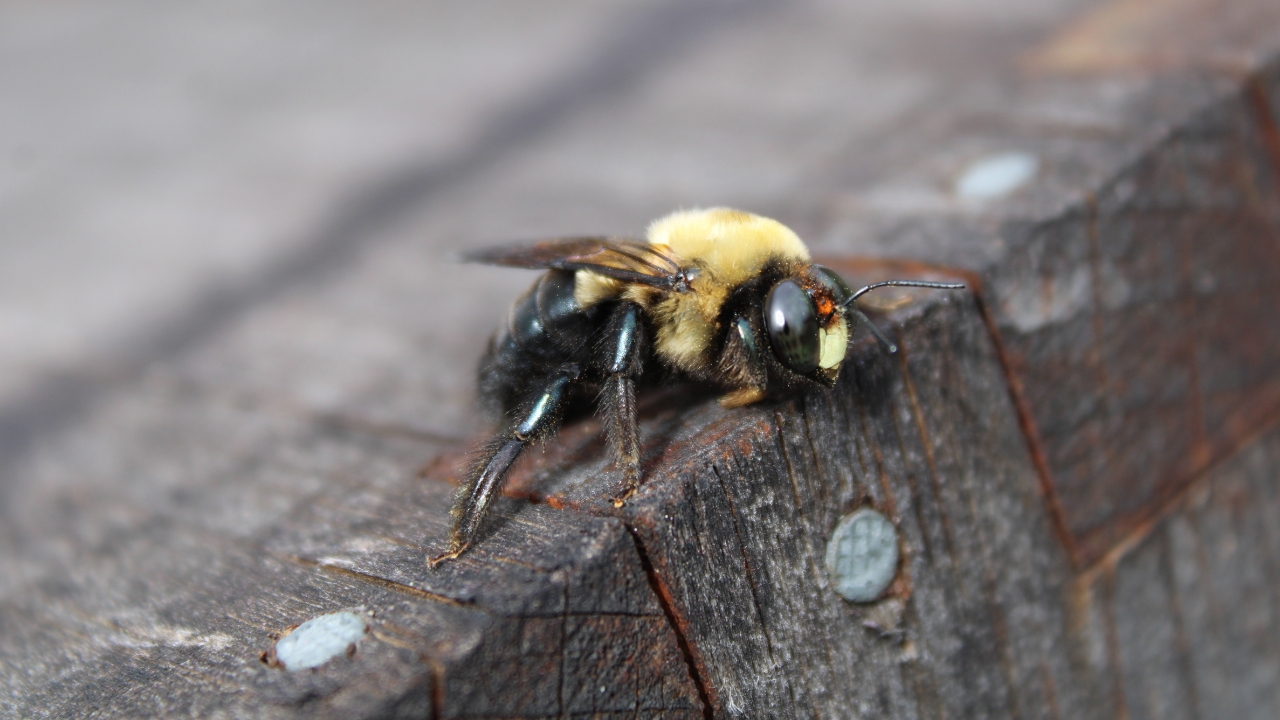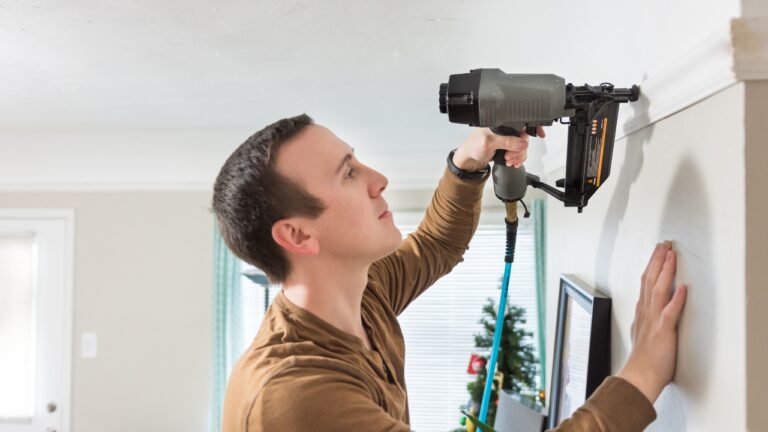How to Get Rid of Carpenter Bees Without Wrecking Your Porch
Carpenter bees might look like bumblebees, but they’re not nearly as helpful—and they can do real damage to wood structures over time. If they’ve made your porch their favorite hangout, you’ve probably noticed the little piles of sawdust, the perfectly round holes, and maybe even a few territorial males hovering around your head.
The trick is getting rid of them without wrecking your porch in the process. Here’s what actually works and how to stay ahead of them before the damage piles up.
Seal Up Old Holes First

Before doing anything else, you’ve got to seal up the tunnels from last year. Carpenter bees will return to old holes and expand them if given the chance.
Use wood filler or dowels and caulk to close off the openings, then touch up with paint or stain. Do it early in the season before they start nesting again. It won’t fix the problem entirely, but it keeps things from getting worse.
Apply a Fresh Coat of Paint or Sealant

Carpenter bees prefer untreated, weathered wood. A solid coat of paint or a good-quality sealant makes your porch less appealing.
Paint is more effective than clear sealant, but anything is better than bare wood. Focus on soffits, railing undersides, and trim—places they like to sneak into when you’re not looking.
Use a Carpenter Bee Spray in Active Areas

There are sprays made specifically for carpenter bees that can be applied to entry points and surrounding wood. They help deter bees from boring in and can kill active ones if they make contact.
Apply it carefully around known problem areas, especially early in the season. Be mindful if you’ve got pets or kids—most sprays list safe drying times and application guidelines.
Hang a Carpenter Bee Trap

Traps don’t catch every bee, but they do help reduce the population—especially if you place them near active tunnels. They mimic the shape of a nest and draw in bees looking for a place to burrow.
You can buy them or build your own using scrap wood and a mason jar. Hang them near rafters or high porch beams, and empty them regularly once they start filling up.
Fill in Gaps and Cracks Around the Porch

Anywhere wood joins together—like where trim meets siding or rafters meet beams—can give carpenter bees an edge. If it’s not sealed tight, they may move in.
Use caulk to close those seams and keep everything watertight. It not only helps with bees, but it also prevents moisture and other pests from sneaking in too.
Keep Watch in Early Spring

Carpenter bees start scouting for nesting sites as soon as the weather warms up. If you catch them early—before the boring begins—you’ve got a better shot at stopping them.
Watch for males hovering and chasing each other around porch beams. They don’t sting, but their presence usually means females are nearby starting tunnels. Knock them down with deterrents before they get settled.
Avoid Killing Them With a Tennis Racket

Tempting? Yes. Effective? Not really. Killing one or two males won’t solve the bigger issue, and you might just end up with angry bees and a cracked railing.
Focus your energy on sealing wood, placing traps, and making the porch a less appealing place to begin with. It takes more patience, but it works better long-term.
Recheck and Reseal Each Year

Unfortunately, this isn’t a one-and-done situation. Even if you manage to get rid of them this year, carpenter bees will keep checking back every spring.
Make it part of your yearly routine—inspect, fill holes, repaint where needed, and put your traps out early. A little attention each season keeps the damage from getting out of hand.
*This article was developed with AI-powered tools and has been carefully reviewed by our editors.







